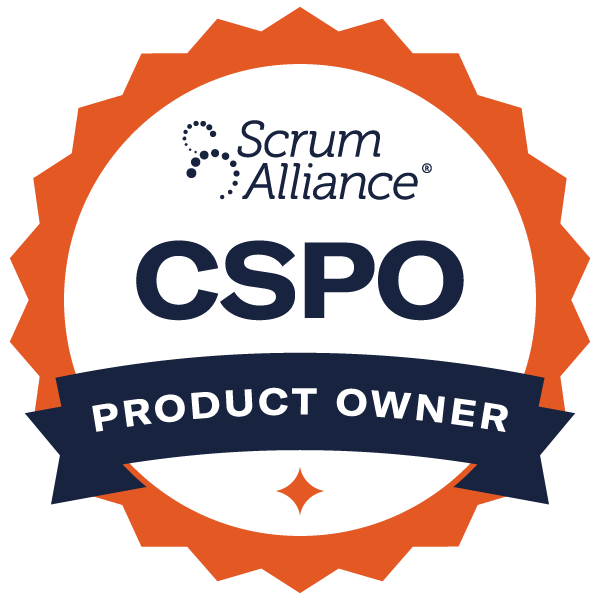Short exercises and case studies will be scattered throughout the two-day session. Longer exercises are detailed below. Time spent on each topic will vary depending on the composition of the class and the interest in particular areas.
Agile Thinking: In order for us to understand the benefits of Scrum and the nuances behind its framework, we begin with the history of agile methods and how relatively new thoughts in software development have brought us to Scrum.
- How manufacturing has influenced software development
- The origins of agile thinking
- The Agile Manifesto
- The complexity of projects
- Theoretical Vs. Empirical processes overview
- The “Iron Triangle” of Project Management
Exercise: Continuous Improvement. A project simulation is designed to expose different agile concepts in practice, allowing participants to experience work in an iterative, self-managed environment.
The Scrum Framework: Here we’ll ensure that we’re all working from the same foundational concepts that make up the Scrum Framework.
- The different Scrum roles
- He different Scrum artifacts
- The different Scrum ceremonies
Exercise: The 59-minute Scrum Simulation. This popular exposure to Scrum asks us to work on a short project that lasts for just 59 minutes! We’ll walk through all of the key steps under the Scrum framework as we work in project teams to deliver a new product.
Scrum Roles Deeper Dive: Who are the different players in the Scrum game? We’ll review checklists of role expectations in preparation for further detail later in our session.
- The Team Member
- The Product Owner
- The Scrum Master
Exercise: establishing product expectations. This is a long-running exercise that carries through into our remaining sections that follow where we will discuss and practice various aspects of product and project planning in an agile Scrum environment.
The Product Backlog, Product Visioning, and Progressive Elaboration: The Scrum Team must have an understanding of our Product Vision so they can make good decisions. The Product Backlog is a reflection of that vision, and we’ll practice developing its content.
- Defining the Product Vision
- The Contents of The Product Backlog
- Five Levels of Planning
- Using User Stories
- Bill Wake and the INVEST model
- The Significance of Granularity
- User Story Brainstorming
- Introduction to Prioritization
- Prioritization’s Impact on Time Management
- Velocity and Story Points. Since a Product Owner is responsible for monitoring progress, we’ll discuss and practice how to measure a Team’s progress in delivering product features.
- Relative Effort
- Velocity
- Planning Poker and Story Points
- Ideal Team Days
- Team Capacity
- Projecting a Schedule
- Project Management Variables and Velocity
Prioritization Considerations and Methods: Prioritization is the Product Owner’s number one tool for maximizing return on investment. In this section we’ll review different techniques available to establish meaningful priorities..
- Bringing Prioritization Into a Project
- Themes and Relative Weighted Priority
- Prioritization Questions and Considerations
- The Value of Increasing our Understanding
- The Value of Risk Reduction
- Theme Scoring
- Kano Modeling
Extracting Value and the Cost of Change: This section touches on several different areas of interest that influence our ability to extract the most value from our projects.
- Fixed Date Contracts
- Product Backlog Refactoring (“Grooming”)
- Canceling a Sprint
- Productivity Drag Factors
- Release Management
- The Impact of Project Switching
- The Impact of Continuous Forced Marches
- Earned Value in an Agile Environment
Closing Topics: We’ll wrap up with direction on where to go next with your Scrum experience, some recommended reading, Scrum reference sites, and our graduation ceremony.





